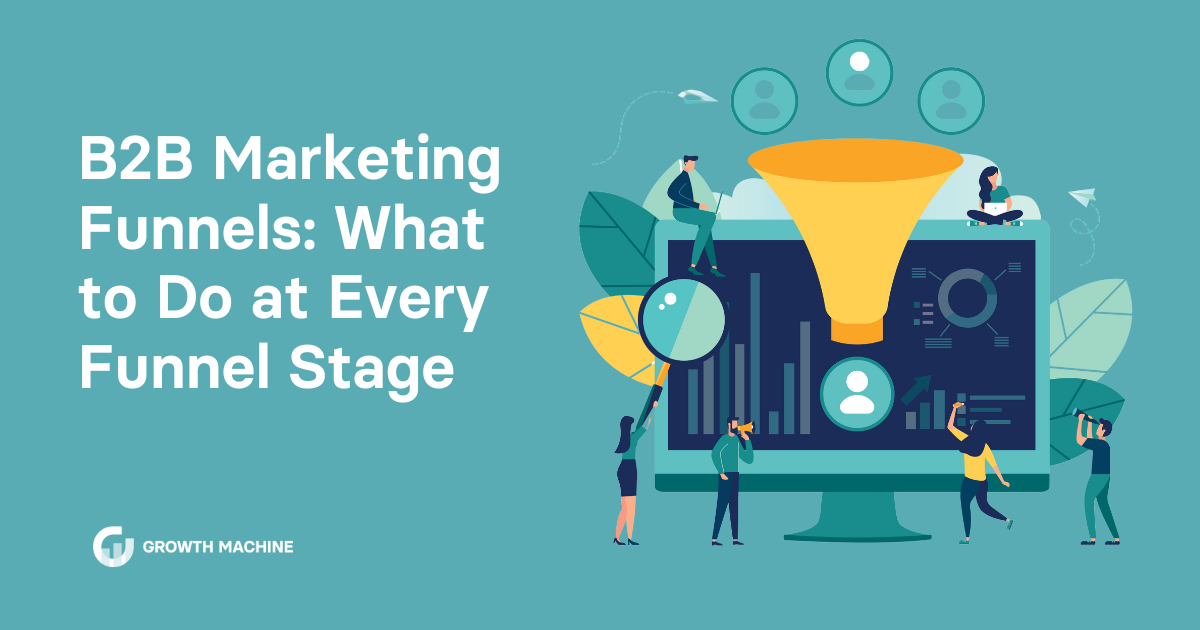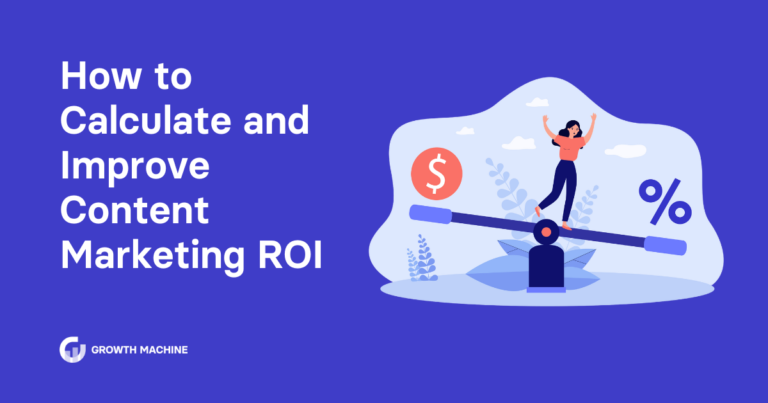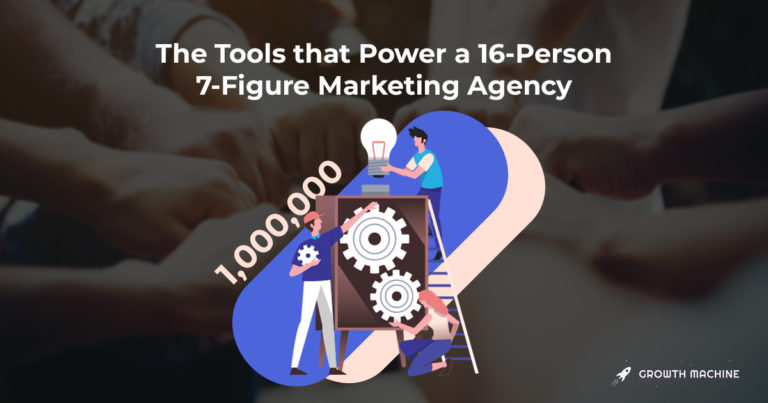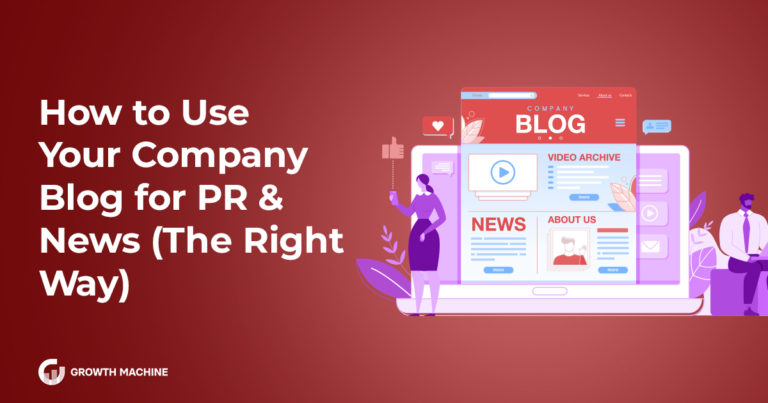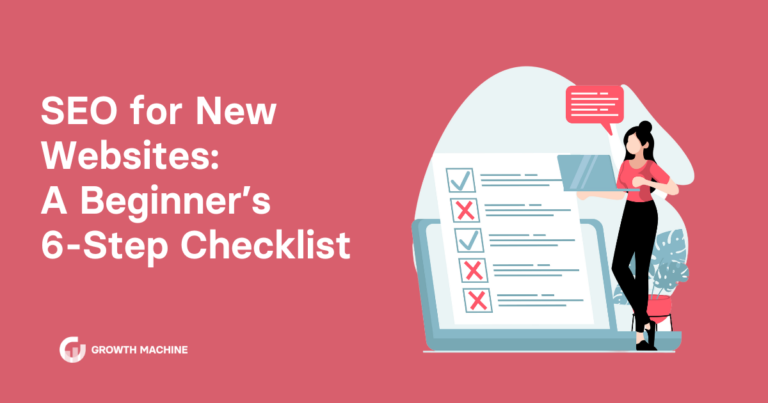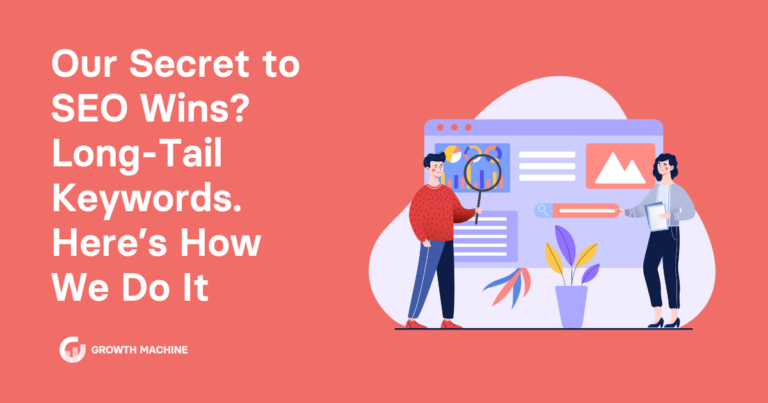B2B Marketing Funnels: What to Do at Every Funnel Stage
Do you want to rake in more sales for your B2B company? You need marketing strategies tailored to the way that you do business, and to the needs of your ideal customers.
The thing is, B2B businesses can’t borrow B2C marketing playbooks; you’ll have to craft your own sales strategy to get ahead. And the best way to get more sales is to create a B2B marketing funnel.
Check out this guide to learn what a B2B marketing funnel is, why it matters, and what you should do during each stage of the funnel to convert more leads.
What Is a B2B Marketing Funnel?
A B2B marketing funnel is a step-by-step process that potential customers follow to eventually become paying customers. A funnel pre-plans every touchpoint your business has with its target audience, from the very first contact all the way to a consultation.
A digital marketing funnel not only defines the customer journey, but also specifies the steps your marketing and sales folks need to take to persuade B2B leads to convert. An optimized marketing funnel will show the right content, to the right prospect, at the right time to pull them through the funnel until they eventually make a purchase.
Keep in mind that the buyer’s journey is different for every business. Your funnel might not look like other businesses’ funnels, and that’s okay.
There are no rules here: Use the funnel to support your marketing team so they can give leads the best customer experience possible.
Sales Funnels vs. Marketing Funnels
Before we get into the nitty gritty of B2B funnels, it’s important to note the difference between sales funnels and marketing funnels. People like to use these terms interchangeably, but they aren’t the same.
Sure, sales and marketing work together, but they often have separate funnels. A marketing funnel focuses on lead generation, while a sales funnel focuses on converting hot leads.
Both types of funnels are important, but they use different playbooks and strategies to convert leads. In this guide, we’re just looking at marketing funnels.
The Benefits of a B2B Marketing Funnel
B2B decision-makers aren’t the same as B2C buyers. You need a funnel strategy tailored to the expectations of B2B buyers to persuade more leads to give your business a chance.
You could fly by the seat of your pants, but creating a documented marketing funnel can help you:
- Create structure: The B2B buying process is anything but straightforward. Instead of panicking and trying to throw a strategy together at the last minute, you can follow your funnel strategy to stay cool as a cucumber. A funnel gives you a playbook to follow, which will help you stay more consistent — and that translates into more money in your pocket.
- Measure the right KPIs: With a marketing funnel, you get insights into how your marketing channels are performing. It’s more organized and structured, so you know the reasons for your success (or failures) based on metrics. Since a funnel makes it easier to track your progress, you can ensure you’re always moving in the right direction.
- Speed up the sales process: The B2B sales process is infamously long. Big-ticket contracts, corporate red tape, and numerous decision-makers drag out the process. B2B sales are complex and time-consuming, but a solid marketing funnel can help you keep things moving when it feels like the relationship is stalling.
A B2B marketing funnel helps you have more empathy for B2B buyers. If you want to increase conversions and boost the quality of your content marketing campaigns, you need a funnel to structure your marketing activities.
4 Essential Steps in the B2B Marketing Funnel
There are several stages in the marketing funnel. From awareness to becoming a loyal customer, a lead has to progress through each stage of the funnel.
You’ll lose some leads at each marketing funnel stage, and that’s normal. But this is why it’s so important to populate your pipeline with dozens of quality leads. B2B leads rely on information from your business, delivered at the right time and in the right medium, to persuade them to continue moving through the funnel.
You’re free to design a B2B marketing funnel that works best for your business model. But at its most basic level, your funnel needs to account for four stages:
- Top of funnel (awareness)
- Middle of funnel (solutions)
- Bottom of funnel (purchasing decisions)
- Post-funnel (advocacy)
Let’s dive into the nuts and bolts of each funnel stage, including the marketing tactics you need to deploy for the best possible user experience.
Top of Funnel (TOFU)
The top of the funnel is the broadest part of the B2B marketing funnel. This is the awareness stage where you want to grab people’s attention and foster brand awareness.
At this point, you’re providing high-level information that educates, builds thought leadership, and connects you with more leads.
People are just becoming aware of your business. You aren’t going with a hard sell right now; you’re just getting their attention.
For the TOFU stage, opt for strategies like:
- Social media content on B2B-friendly platforms, like LinkedIn
- Search engine optimization (SEO) to provide educational content
- Influencer marketing to increase your reach
Middle of Funnel (MOFU)
At the middle of the funnel, leads express their desire for a solution. They’re aware of their pain points and they crave solutions. This is where you want to attune leads’ attention to you as a potential solution to their problems.
Now’s the time to build trust. Go all-in with content marketing like:
- Webinars
- Lead magnets like guides, templates, and checklists
- Freebies or free trials
- White papers
- Case studies
You can touch on your solutions at this funnel stage, but keep the promotional stuff to a minimum.
Bottom of Funnel (BOFU)
B2B leads at the bottom of the funnel are in decision-making mode. After months of deliberation and meetings, they’re ready to choose a vendor.
This is where you pull out harder-hitting calls to action. Try to get B2B buyers to take action and boost conversion rates as much as possible. You can be more salesy here — it’s your last push to convert leads before they exit the funnel.
You can convert prospects at this stage with:
- Product tutorials or demos
- Social proof in the form of testimonials or reviews
- Landing pages with hard CTAs
- Pricing comparisons
- Consultations and quotes
- Upsell or upgrade offers to free trial users
- Retargeting prospects that fell out of the funnel or abandoned their cart
- Trigger-based email marketing sequences
Sometimes qualified leads will fall out of the funnel at this stage because they choose another provider. B2B leads can make it all the way to this stage of the funnel and still fall through — that’s completely normal.
Post-funnel
TOFU, MOFU, and BOFU are the three main funnel stages you should worry about, but you’re never really done nurturing leads. After you convert a lead into a customer, you need to foster long-term brand loyalty and advocacy. If your customers love your brand, they’ll not only remain loyal, but they’ll advocate for your brand.
Since 92% of people trust word-of-mouth recommendations, you should always set up loyalty programs to encourage current customers to spread the word. You can do that through:
- Point-based rewards programs
- Contests
- “Just because,” birthday, or anniversary gifts
- Referral commissions or affiliate programs
Make Funnel Content the Backbone of Your Business
B2B buyers don’t want you to come in with a fast sales pitch. You have to earn their trust. You can do just that with a high-quality B2B marketing funnel that generates quality leads at scale. The thing is, you have to use specific tactics at each stage of the funnel to convert these finicky leads.
If B2B marketing funnel is the racecar that gets you across the finish line, content is the gas. Fuel your B2B marketing funnel with the right content.
Growth Machine’s SEO experts can help you not only improve your search engine rankings, but write the right copy for each stage of the funnel. Chat with our experts now to jumpstart your marketing funnel with powerful content.

